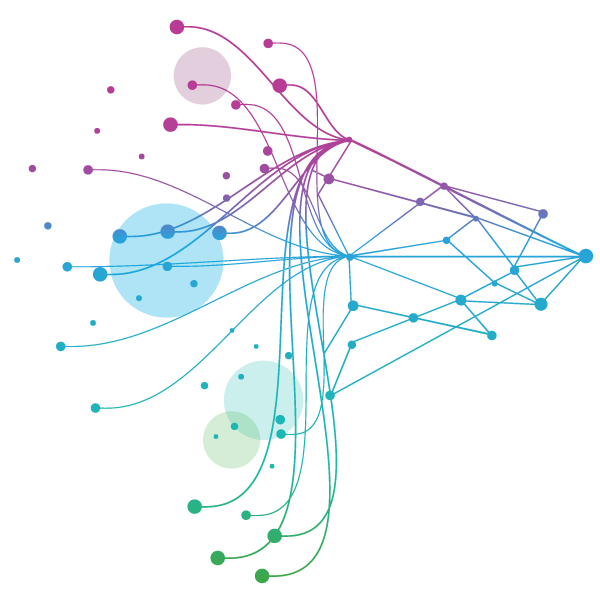Bring your biosimilar to market faster by tapping into unparalleled data, technology, advanced analytics, and scientific expertise.






















- Blogs
- Challenges of biosimilars trials and how CROs like IQVIA can help
In simple terms, a biosimilar is a biological drug that closely resembles another biological drug (known as the “reference drug”). Both biosimilars and reference drugs are derived from living organisms. They contain the same active ingredient but are produced using different manufacturing processes.
According to the European Medicines Agency, a biosimilar is a biological medicine that is highly similar to another biological medicine already approved in the EU (a “reference medicine”) in terms of structure, biological activity, efficacy, safety and immunogenicity profile. The U.S. Food and Drug Administration defines a biosimilar as a biological product that is highly similar and has no clinically meaningful differences from an existing FDA-approved reference product. As of January 2025, there were 64 biosimilar drug approvals in the U.S. and 92 in the EU.1
The goal of a biosimilar development program is to demonstrate, using a totality-of-the-evidence approach, that the biosimilar product is very similar to the licensed reference product, despite minor differences in clinically inactive components. It must also be shown that there are no clinically significant differences between the biosimilar and the reference product in terms of safety, purity and potency. The objective is not to independently prove the biosimilar’s safety and efficacy but to build upon the existing scientific knowledge of the reference product. This means that biosimilars are expected to have the same safety and effectiveness as the reference product and are to generally be used to treat the same conditions.
How is a biosimilar different from its reference product?
Biosimilars are developed to increase access to biological therapies and improve patient outcomes. Both the biosimilar and the reference product are essentially different versions of the same active drug substance, though the reference product itself may vary from batch to batch and change over time due to modifications in the manufacturing process after licensing.
However, additional steps to justify similarity are usually necessary when developing biosimilars, either analytically or clinically, due to differences in cell lines and manufacturing processes, among other factors.
Biosimilars regulatory guidance overview
The primary objective of regulatory bodies is to ensure that biosimilars adhere to high standards of quality, safety and efficacy, and are highly comparable to the reference product. Many countries, in addition to the United States and the EU, have issued guidance documents for biosimilars. While there may be some minor differences in guidelines issued by different agencies, most are aligned on the fundamental approaches needed for biosimilars development and evaluation. Figure 1 illustrates the progress of the biosimilar landscape around the world.

Figure 1: Framework of Biosimilars Legislation and Guidance Development 2003-2019
The EMA has been approving biosimilars since 2006, longer than the other regulators. Table 1, adapted from a September 2024 article in the Journal of Law and the Biosciences, shows different regulatory bodies’ first biosimilar approval and the total number of approved drugs as of May 2024.
Table 1: Biosimilar approved per agency as of May 20243
|
Region |
Regulator |
# Approved Biosimilars |
First Biosimilar Approved year |
|
Australia |
Therapeutic Goods Administration |
55 |
2010 |
|
Canada |
Health Canada |
58 |
2009 |
|
European Union |
European Medicines Agency |
101 |
2006 |
|
United Kingdom |
Medicines and Healthcare products Regulatory Agency |
93 |
2006 |
|
United States |
Food and Drug Administration |
53 |
2015 |
As seen in Figure 2, most biosimilar drugs have been approved in the therapeutic areas of immunology, blood and lymphatic disorders, oncology and endocrine disorders since 2006.
Figure 2: Biosimilars per therapeutic area4

Biosimilars in oncology
The first biosimilar approved under the EMA was Abseamed, produced by the marketing authorization holder MEDICE Arzneimittel Pütter GmbH & Co. KG. The FDA established a framework for biosimilars, which was approved in 2009 when the Biologics Price Competition and Innovation Act was passed.
There are a significant number of biosimilars in the pipeline, with many being developed in oncology and immunology.
Challenges in biosimilars studies
Biosimilars have become a promising solution for lowering the cost of treatment and enhancing patient access to life-saving biologics. Nevertheless, introducing these complex molecules to the market is filled with challenges, including within:
- Reference product procurement: Because the biosimilar product is based on demonstrating its similarity to the previously approved reference product, it’s necessary to obtain specific batches of the reference product, ensure its continuous supply and manage the cost of doing so. Some variability between batches of the reference drug is expected (e.g., due to biological activity). However, such variability could compromise the comparability exercise, making it optimal to use only one batch in the pharmacokinetic-pharmacodynamic analysis (i.e., study of movement of a drug through the body and the body’s biological response to the drug).
- Study design: For bioequivalence studies, a randomized, two-period, two-sequence single-dose crossover design is recommended. For products with a long half-life (a common characteristic of biosimilar products), a crossover study design would lead to protracted clinical studies. Such lengthy studies are susceptible to high subject dropout rates and increased subject variability, potentially putting the successful outcome of the study at risk. Under such circumstances, regulatory guidance from both the FDA and the EMA allows a parallel-study design.
- Protocol adherence: Familiarity with the reference product and/or product treatment, and local practices can lead to variations in study procedures and protocol deviations at study sites. Strong protocol training and supportive protocol study aids are key to obtaining quality data in biosimilar studies.
- Recruitment: Clinical trial patient recruitment has historically struggled with competition from other trials, patient bias toward experimental therapies, lack of incentive for investigators and lack of information about upcoming trials. Apart from these well-recognized hurdles, biosimilar drug trials face additional challenges due to specific regulatory requirements for demonstrating similarity with the biologic reference drug. Below we discuss some of them and recognize how they are unique to biosimilar drugs.
- Access to established standard of care with proven efficacy: Patients already being treated with the SOC may be reluctant to switch to a biosimilar due to fear of reduced efficacy or unknown side effects. Previously untreated patients also tend to prefer the SOC due to fear of unknown efficacy/side effects and their knowledge of the SOC’s proven efficacy. Additionally, physicians uninformed about the benefits or safety profile of a biosimilar may believe the SOC is superior and hesitate to recruit patients for a biosimilar trial. Combined reluctance from all stakeholders and preference for SOC can significantly impact recruitment into an experimental biosimilar trial. In this case, appropriate country and site selection plays a crucial role.
- Changes to standard of care: The standard of care keeps evolving into more effective treatment regimens over time. Physicians, patients and ethical committees can be hesitant to participate in a biosimilar clinical trial if an upcoming potential SOC is anticipated to have better efficacy. Additionally, regulatory bodies may require modifications to the trial design or demand additional data to ensure that the biosimilar is comparable to the new SOC. This can complicate the trial, making it less attractive for patients and physicians.
- Lack of awareness among investigators and patients: When physicians and patients are unaware of upcoming biosimilar trials, it can lead to insufficient recruitment. Even if information about a new biosimilar trial is effectively disseminated, all stakeholders must be educated on the nature and benefits of a biosimilar. Many physicians and patients don’t know what a biosimilar drug is, how it differs from the originator drug or its benefits. With safety and efficacy unproven, even if biosimilars offer huge cost benefits, they can be perceived as risky and experimental. This makes patients and physicians reluctant to sign up for biosimilar clinical trials, leading to lower recruitment rates.
- Competition with clinical trials investigating new biological molecules: Several trials targeting the same indication and patient pool makes patient recruitment difficult for any clinical trial. When the patent for reference products nears expiration, many pharma companies target biosimilar biologics. This adds to the competition for biosimilar clinical trials. Most sponsors prefer to recruit worldwide to complete enrollment ahead of other sponsors. New biological molecules are perceived as more innovative with the potential for better efficacy, making them preferred over biosimilars, whose efficacy is expected to be comparable to the originator drug.
- Lack of incentive for investigators and patients: Within countries/sites where the SOC/reference biologic is readily accessible, comparative efficacy and safety studies for biosimilars are often perceived by investigators as having little scientific interest or lacking novel or interesting study designs. Patients may also not see any advantage to participating in a biosimilar study if they have access to the reference product as part of their standard of care.
Addressing recruitment challenges in partnership with experienced CROs
To achieve ambitious patient recruitment goals, sponsors should form partnerships with CROs that have extensive experience, access to real-world clinical data, networks of seasoned investigators and access to patient-connecting platforms. This will enable the optimization of biosimilar drug development in the following ways:
To ensure timely and sufficient recruitment, it is essential for sponsors to connect with investigators to understand their perspective on biosimilar drugs and initiate awareness. Identifying investigators’ concerns that could affect their interest in the trial, conversing with them to eliminate undesirable bias toward biosimilars and amending the trial design/protocol ahead of the study can prevent unexpected recruitment delays. Here, CROs like IQVIA can use their existing relationships and information channels.
In addition to investigators, patients should be informed about how biosimilars can offer affordable alternatives to more expensive, branded biologic therapies, thus enhancing access to treatments that might otherwise be financially out of reach. CROs can use their expertise in running patient education campaigns to help sponsors achieve desired enrollment rates. IQVIA’s Clinical Trial Educator services can significantly aid such campaigns. With CTE support, there is a notable increase in site engagement and patient recruitment.
The selection of appropriate countries and sites is crucial for ensuring optimal recruitment. CROs can provide sponsors with data-driven analysis to identify countries and markets with the greatest unmet clinical needs. Choosing countries and sites with limited or partial access to the SOC (depending on insurance plans and coverages) can lead to better recruitment rates. With the partnership of CROs and site networks, obtaining genuine feedback from investigators before study planning helps to inform country selection. An informed strategy can be developed with proactive feasibility analysis, analysis of multiple data sources and predictive strategy modeling. Additionally, reaching out to less explored countries with a high incidence of the trial disease and better performance in clinical trials in terms of recruitment and data quality is also an option in biosimilar clinical trials. This will require the CRO’s experience and network to manage and monitor trials in those countries.
In the right countries, it is essential to choose sites that are capable of meeting the regulatory requirements of a biosimilar clinical trial. With IQVIA’s strategic site partnerships and networks, identifying suitable sites and enhancing site performance adds value to managing biosimilar trials. Ideal sites should have healthcare professionals interested in conducting biosimilar studies, appropriate capabilities, experience and facilities, including those suitable for PK studies.
Conclusion
The biosimilar market is booming, and so are biosimilar clinical trials. Because the landscape for biosimilar drugs is very competitive, it is vitally important to strategically plan the trial well from its inception. This will help in gauging the study risks and having a mitigation plan for them. This will only be possible if the sponsor collaborates with experienced CROs and investigators.
References:
- Biosimilar Approval; AJMC; The Center for BIOSIMILAR; last updated January 07, 2025 (https://www.centerforbiosimilars.com/biosimilar-approvals)
- Gherghescu, I.; Delgado-Charro, M.B. The Biosimilar Landscape: An Overview of Regulatory Approvals by the EMA and FDA. Pharmaceutics 2021, 13, 48. https://doi.org/10.3390/ pharmaceutics13010048
- Ryan P Knox, Vineet Desai, Ameet Sarpatwari; Biosimilar approval pathways: comparing the roles of five medicines regulators; Journal of Law and the Biosciences, Volume 11, Issue 2, July-December 2024, https://doi.org/10.1093/jlb/lsae020
- IQVIA_Global Biosimilars Database Q4 2024





